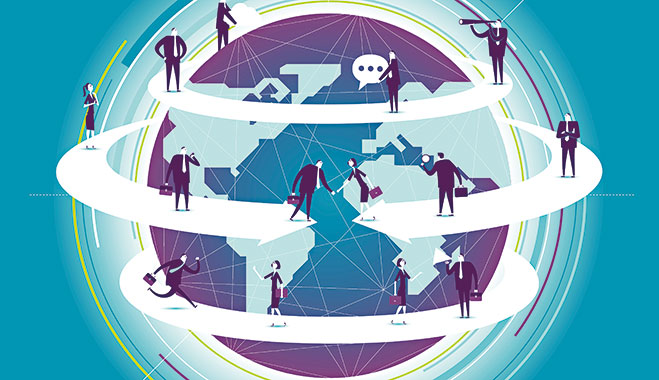
Nov 15, 2018: How the US FinTech Market is Positioned? The FinTech “uprising” has been reshaping the financial sector by cutting costs and improving the quality of services to the consumer with lower time requirement. The FinTech sector has been evident from a variety of industries ranging from payments to wealth management, Robo-advisors, AI / Blockchain Models and others. There has been a surfeit of startups, with FinTech firms attracting over billions in 2015. Increased Investments, innovation in technology, digital connectivity, and supportive government are some of the factors among others to spur the growth in the FinTech market in the US. The FinTech market has increased in terms of the transactional value in 2015. The growth was compounded annually.
After the crisis period, the banks in the US have been following strict rules for lending along with higher interest rates especially for the small business. This acted as a pulling factor for the market place lending model in the FinTech space. FinTech growth has also been spurred by the favorable demographic scenario in the country. There has been a rise in the consumers between the age of 18-34 (millennial) who are characterized by the experience sharing habits and reach out the mobile phones for every data or detail they need.
The short and medium term scenario shows excessive growth till the FinTech sectors penetrate in US market by 2025. As of now only payments segment has matured and accepted in the US properly, high growth of other segments would push the transactional volume of FinTech to a higher growth trajectory up till 2025.
How has the Digital Commerce Segment Performed?
Technology has largely transformed the way customers purchase their products and other services. Digital commerce has even impacted the travel and consumer foodservice industries as consumers order food and book travel tickets online via mobile phones or desktops. Owing to rapid rise in online and mobile retail sales and such huge volume of transactions made online by customers involving billions of dollars, payment gateway providers have the ultimate responsibility of enabling safe and secure transactions and counter any malicious practices at the same time.
E-commerce market in the country has been the major contributor to the digital commerce market. Payment gateways transacted billions more in the form of e-commerce in 2015 as compared to 2010. The number of digital shoppers in the US inclined from 2010 to 2015. Growing internet penetration and smartphone users has led to incline in online B2B transactions in the recent past. All these factors have augmented the growth of digital commerce market between 2010 and 2015.
The major companies in the segment include PayPal, Stripe, Authorize.NET and Square amongst others. PayPal is leading the market with big share in terms of number of websites using the platform followed by Authorize.NET, Stripe, Square and Others
The country’s merchant payment landscape has been undergoing some major technology driven change. Multi-channel consumer access to e-commerce has sparked the demand for new services that support multichannel commerce, big data analytics, enhanced loyalty programs and target advertising. Newer players in the industry providing digital payment gateways, including the likes of Braintree and Stripe, have brought in advanced solutions for merchants along with more secured transaction process and heightened fraud prevention. Similar such innovations in the upcoming future will drive the digital commerce as merchants would be required to upgrade to payment gateways facilitating greater number of services.
What are the Trends in US Mobile Payments Market?
Growing awareness and usage of major mobile wallets including Apple Pay, PayPal and Android Pay amongst others resulted in a steep incline in the number of users. As a result, the market grew in 2015. Overall, the Transaction Value of mobile payments grew between 2011 and 2015.
The mobile wallets ecosystem (m-commeerce) has grown at an overwhelming pace in the last four years. Advanced payment security, faster checkout, loyalty rewards and customer ease have been the major factor driving the mobile wallets market in the country. However, in-store payments through mobile wallets have not had much of a success as of yet. Delay in adoption of the required infrastructure such as NFC terminal by retail merchants have prevented mobile wallets from achieving mainstream adoption.
Peer-to-peer payment apps have made it highly convenient for customer transfer money and their services usually are accompanied with very nominal charges or even free of cost. Mobile P2P payment services have been growing more rapidly than desktop P2P payment services. Technology players and social media companies, including Facebook and Snapchat, have forayed into P2P payments to enable faster and convenient method of transferring money between peers. PayPal, Venmo, Paytm, Square Cash, Dwolla, Google Wallet, Facabook Cash and Snapcash are some of the key players in this space. The P2P money transfer market grew meteorically in 2015. The NFC Based payments and the adoption of mobile POS technology is expected to popularize the usage of smart wearables.
The mobile payments market in the United States have been growing at tremendous rate during the past five years on the back of increased smartphone utilization and high internet availability. It is expected that by the end of 2016 the market will increase. As per the current scenario in the US, moist of the people prefer plastic money as their preferred mode of payment followed by cash while only few of the population willing to prefer mobile payments as their payment option. This shows that even though the growth is substantial, there is a great room for high growth in the market backed by greater penetration.
